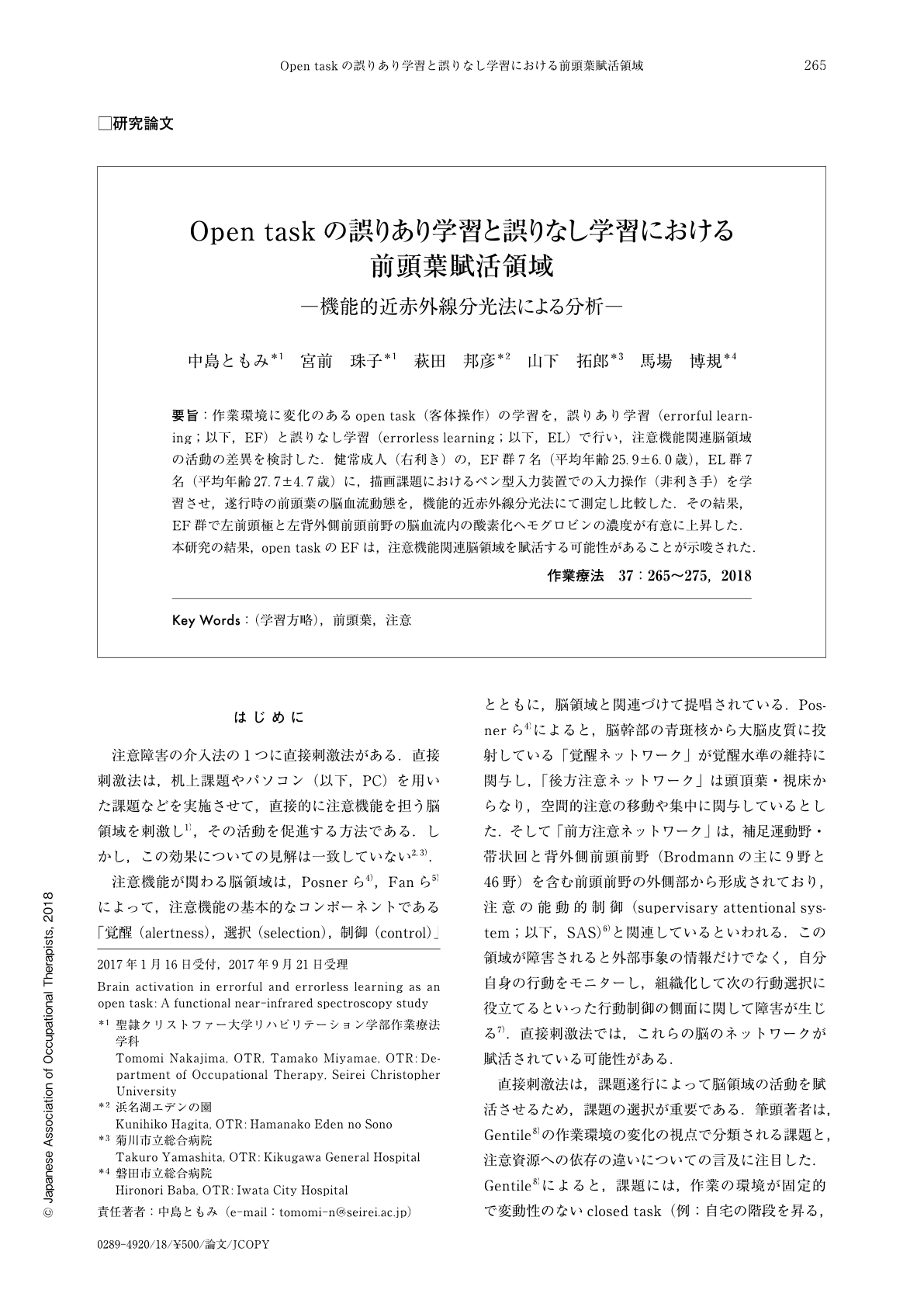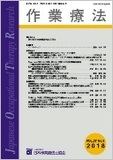Japanese
English
- 販売していません
- Abstract 文献概要
- 1ページ目 Look Inside
- 参考文献 Reference
要旨:作業環境に変化のあるopen task(客体操作)の学習を,誤りあり学習(errorful learning;以下,EF)と誤りなし学習(errorless learning;以下,EL)で行い,注意機能関連脳領域の活動の差異を検討した.健常成人(右利き)の,EF群7名(平均年齢25.9±6.0歳),EL群7名(平均年齢27.7±4.7歳)に,描画課題におけるペン型入力装置での入力操作(非利き手)を学習させ,遂行時の前頭葉の脳血流動態を,機能的近赤外線分光法にて測定し比較した.その結果,EF群で左前頭極と左背外側前頭前野の脳血流内の酸素化ヘモグロビンの濃度が有意に上昇した.本研究の結果,open taskのEFは,注意機能関連脳領域を賦活する可能性があることが示唆された.
The purpose of this study was to clarify differences in the activities of the prefrontal cortex to control attention when performing an open task through errorful (EF) and errorless (EL) learning. The former does not involve skill acquisition errors, while the latter is performed with trial and error. Two right-handed healthy groups performed a drawing task with the non-dominant hand to acquire skills needed for data entry using the pen-touch method: the EF group and the EL group (EF 7; mean age:25.9±6.0); and (EL 7; mean age:27.7±4.7). During the task, changes in cerebral hemodynamics in the frontal association area were measured using functional near-infrared spectroscopy for comparison among the groups. As a result, the concentration of oxyhemoglobin in the blood flow within the left frontal pole and the left dorsolateral prefrontal cortex increased significantly in the EF group. This suggests that performing open tasks through EF learning could activate the brain regions that control attention.

Copyright © 2018, Japanese Association of Occupational Therapists. All rights reserved.


